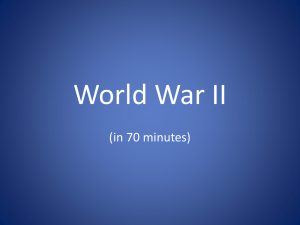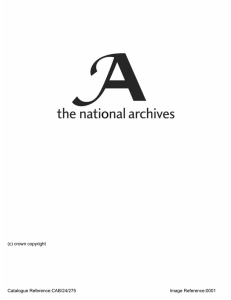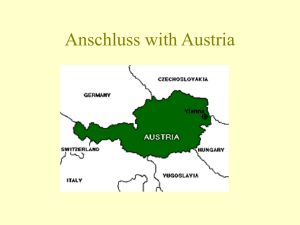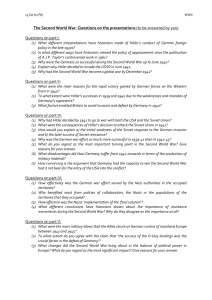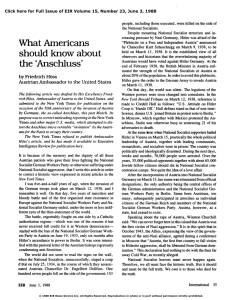The Anschluss: Austria's Absorption into Nazi Germany, March 12
advertisement
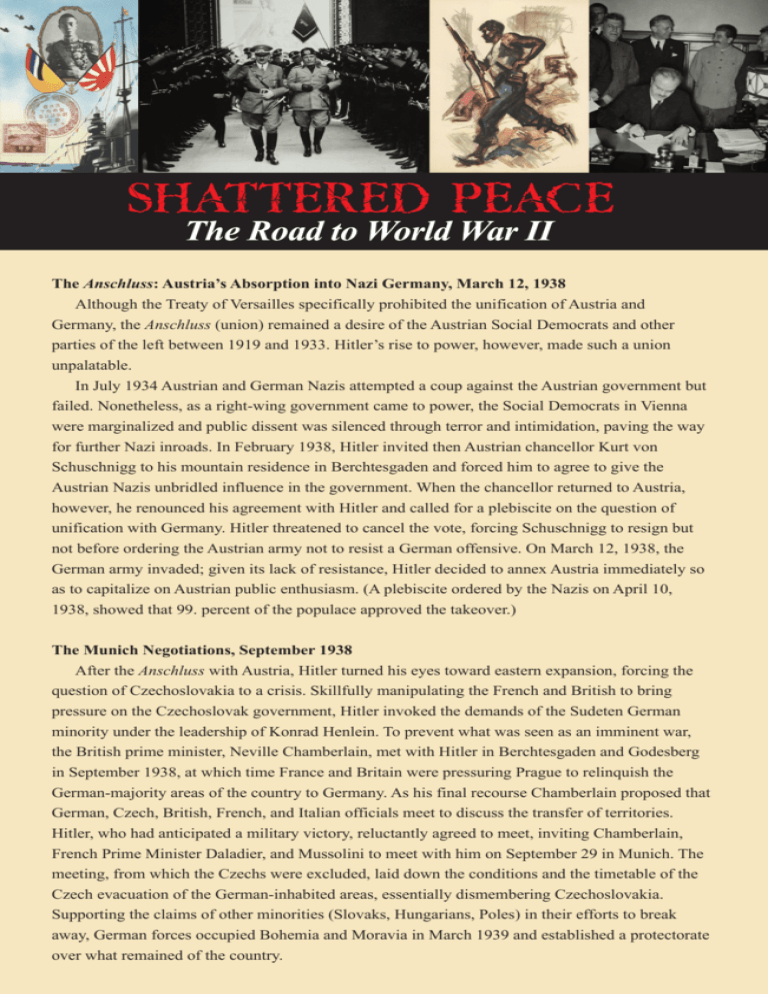
The Anschluss: Austria’s Absorption into Nazi Germany, March 12, 1938 Although the Treaty of Versailles specifically prohibited the unification of Austria and Germany, the Anschluss (union) remained a desire of the Austrian Social Democrats and other parties of the left between 1919 and 1933. Hitler’s rise to power, however, made such a union unpalatable. In July 1934 Austrian and German Nazis attempted a coup against the Austrian government but failed. Nonetheless, as a right-wing government came to power, the Social Democrats in Vienna were marginalized and public dissent was silenced through terror and intimidation, paving the way for further Nazi inroads. In February 1938, Hitler invited then Austrian chancellor Kurt von Schuschnigg to his mountain residence in Berchtesgaden and forced him to agree to give the Austrian Nazis unbridled influence in the government. When the chancellor returned to Austria, however, he renounced his agreement with Hitler and called for a plebiscite on the question of unification with Germany. Hitler threatened to cancel the vote, forcing Schuschnigg to resign but not before ordering the Austrian army not to resist a German offensive. On March 12, 1938, the German army invaded; given its lack of resistance, Hitler decided to annex Austria immediately so as to capitalize on Austrian public enthusiasm. (A plebiscite ordered by the Nazis on April 10, 1938, showed that 99. percent of the populace approved the takeover.) The Munich Negotiations, September 1938 After the Anschluss with Austria, Hitler turned his eyes toward eastern expansion, forcing the question of Czechoslovakia to a crisis. Skillfully manipulating the French and British to bring pressure on the Czechoslovak government, Hitler invoked the demands of the Sudeten German minority under the leadership of Konrad Henlein. To prevent what was seen as an imminent war, the British prime minister, Neville Chamberlain, met with Hitler in Berchtesgaden and Godesberg in September 1938, at which time France and Britain were pressuring Prague to relinquish the German-majority areas of the country to Germany. As his final recourse Chamberlain proposed that German, Czech, British, French, and Italian officials meet to discuss the transfer of territories. Hitler, who had anticipated a military victory, reluctantly agreed to meet, inviting Chamberlain, French Prime Minister Daladier, and Mussolini to meet with him on September 29 in Munich. The meeting, from which the Czechs were excluded, laid down the conditions and the timetable of the Czech evacuation of the German-inhabited areas, essentially dismembering Czechoslovakia. Supporting the claims of other minorities (Slovaks, Hungarians, Poles) in their efforts to break away, German forces occupied Bohemia and Moravia in March 1939 and established a protectorate over what remained of the country.
